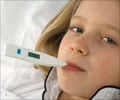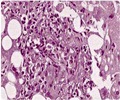Over-emphasizing fever as the main symptom of COVID-19 will result in several active cases of infection being missed. This is because other nasal symptoms, cough, or breathlessness may get overlooked, which can result in asymptomatic transmitters of the infection in the community.

‘Fever was present in only 17 percent of study participants admitted with COVID-19 infection which was far less compared to other reports across the globe. Most patients were asymptomatic and few reported cough and nasal symptoms.’
Read More..




The findings were according to a study conducted between March and April, by a team of researchers from All India Institute of Medical Sciences (AIIMS), led by AIIMS Delhi director Dr Randeep Guleria. According to study published in the Indian Council of Medical Research's (ICMR) Indian Journal of Medical Research fever is seen as a Covid-19 symptom only in 17 percent of the patients out of the 144 observed in the All India Institute of Medical Sciences (AIIMS) Trauma Centre, Delhi, and AIIMS in Jhajjar, Haryana.Read More..
The paper has been titled "Clinico-demographic profile hospital outcomes of Covid-19 patients admitted at a tertiary care centre in north India". The aim of the study describe the clinicodemographic characteristics and in-hospital outcomes of a group of Covid-19 patients in north India.
Study Subjects
The study included 144 patients, who were mostly men that were part of a public congregation. Their mean age was 40 years with 93.1 percent males and 10 foreign nationals. The exposure was via domestic travel to or from the affected states, around 77.1 percent, or though close contact with COVID-19 patients in the congregation.
"However, this may be related to the fact that the majority of our patients were part of a public congregation mainly attended by males, which was identified as a Covid-19 hotspot, and patients were identified on active screening," the study stated.
Advertisement
The study states that "Fever was present in only 17 percent of our patients, which was far less compared to other reports across the globe, including the Chinese cohort in whom 44 percent had fever at the time of presentation and 88per cent developed fever during the hospital stay,"
Advertisement
The study pointed out that a significant proportion, around that 44.4 percent of patients had no symptoms. Among the symptomatic patients, 34.7 percent had cough, 17.4 percent reported fever, while only two percent reported nasal symptoms.
Correlation with smoking
Though parallels were being drawn between the COVID-19 infection and smoking, the researchers in this study found no such association between age, gender or even the habit of smoking to those who contracted Covid-19.
The study stated "no significant association" between the severity of the disease with age, sex, smoking status, TLC (total lung capacity) grading or lymphopenia.
The study stated, "However, a significant association was observed between severe disease at presentation and Neutrophil-to-Lymphocyte [N-L] Ratio." The N-L Ratio is used to assess inflammation in the body.
According to the study, nine patients were smokers with a with a median smoking index of 200, none of whom had severe disease, or worsening during the hospital course.
The study warned that "However, according to a recent systematic review and meta-analysis, smoking appears to be a risk factor for Covid-19 progression with higher prevalence of smoking among Covid-19 patients with severe, progressive disease or intensive care admission."
Treatment
Majority of the patients required only supportive care, and symptomatic treatment using antihistamines, vitamin C, and paracetamol. Only one patient required mechanical ventilation and five patients needed oxygen supplementation, with no requirement of non-invasive ventilation or high-flow nasal cannula, in any patient.
Azithromycin was prescribed to 29 (20.1 per cent) patients, HCQ was administered to 27 (18.7 per cent) patients and 11 (7.6 per cent) received both HCQ and azithromycin. One patient was prescribed antitubercular therapy on a clinicoradiological basis.
Source-Medindia












